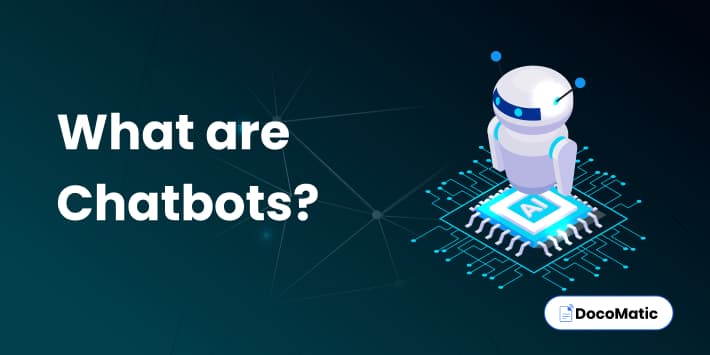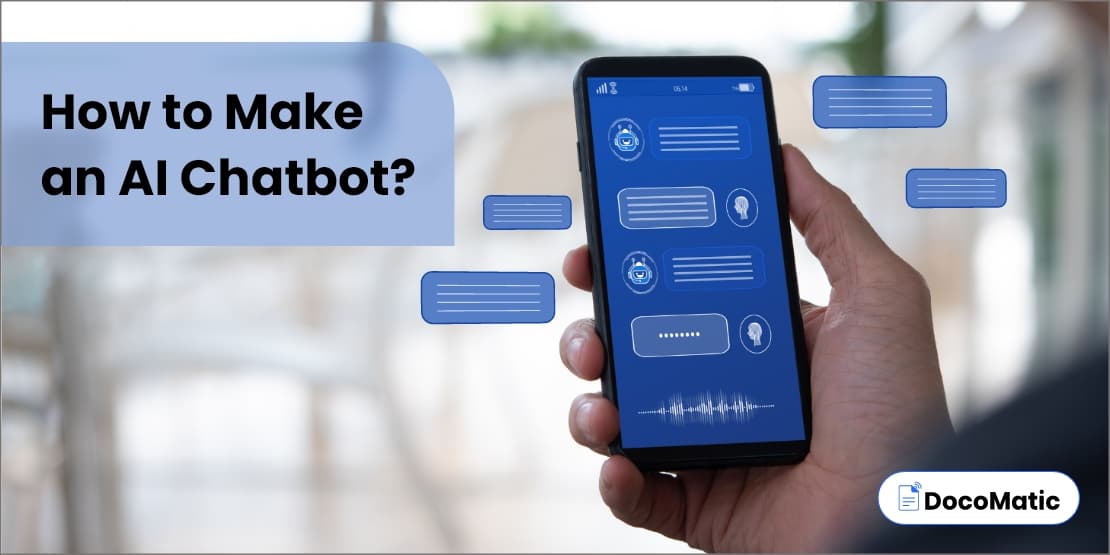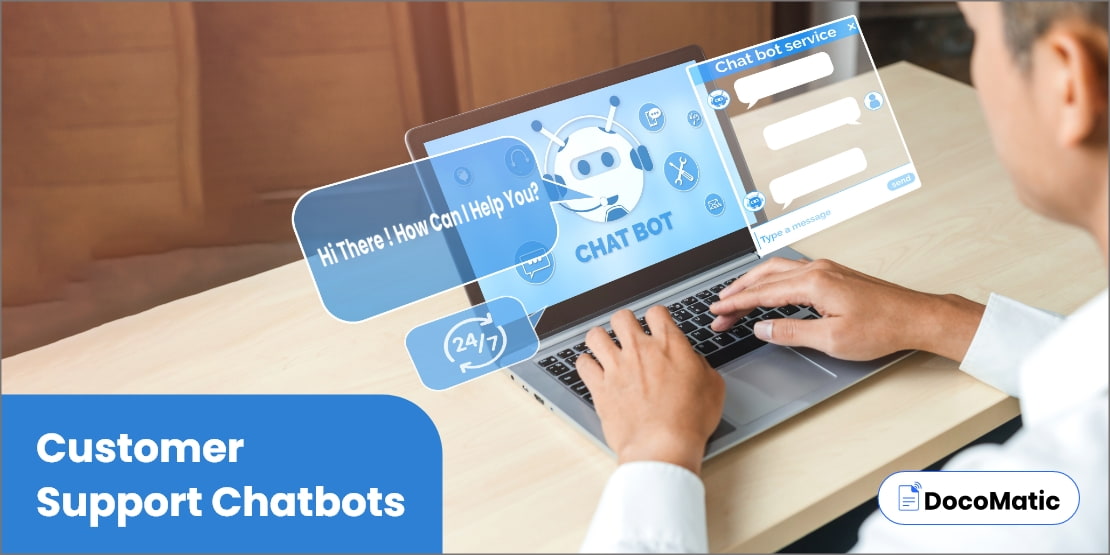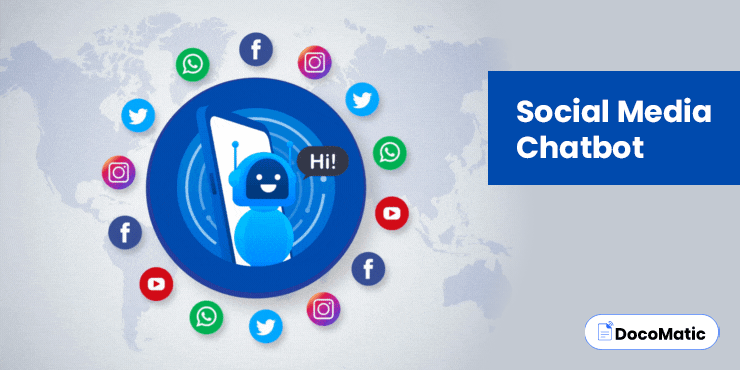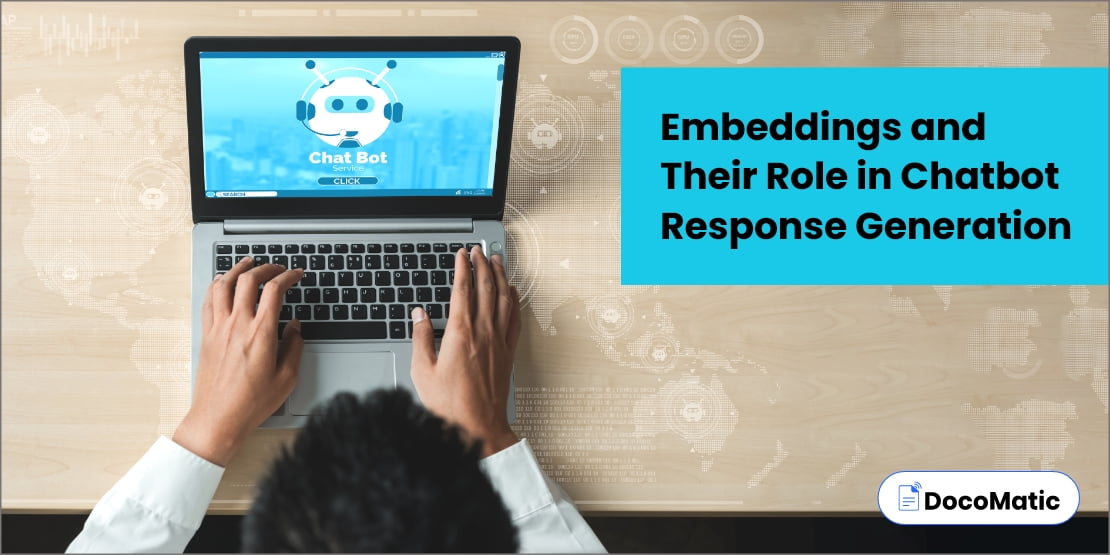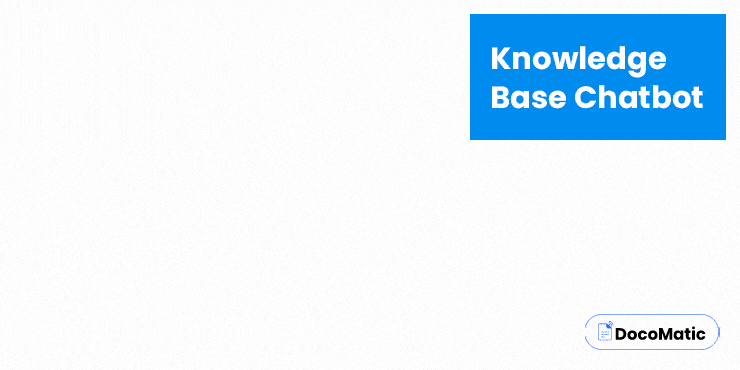In recent times, AI chatbots have been gaining a lot of popularity thanks to the promising future applications that they have demonstrated. Though what are chatbots exactly? Are chatbots simple repositories of data or are they complex thinking machines that can learn and adapt to their environment?
Given the history of chatbots, it is hard to comprehend how far they have come from their initial stages. With such rapidly evolving technologies at hand, it is crucial to understand their inner workings and look out for ways to integrate them into real-world applications.
Having in-depth information about the subject can help you use AI chatbots to significantly reduce business costs or even help you get ahead in your career. This is why in this blog we will look at what is a chatbot and the ways in which it can be used for the betterment of everyday life.
Table of Content
What are Chatbots?
As the name suggests, chatbots are basically automated bits of software or computer program that simulates human conversation to chat or resolve their queries. These chatbots differ greatly in their scope and abilities when holding up conversations with humans.
Chatbot technology has progressed beyond simple decision tree-style conversations and can now understand and respond coherently regardless of the type of prompt. This is all thanks to the natural language processing abilities that are loaded in newer chatbots.
Artificial intelligence-powered chatbots are capable of resolving the most complex queries within seconds as they can decipher human language effortlessly with powerful language models. Such abilities make the utility of model chatbots basically limitless. Apart from this, there are many other advantages and disadvantages of using chatbots for your business.
How do Chatbots Work?
The conversational capabilities are what decide the complexity of the chatbot. This is why the workings of chatbots can basically be divided into three different types. Live agent chatbots, rule-based chatbots, and AI-powered chatbots. Let us start by looking at the simplest chatbot form.
1. Rule-based chatbots
Rule-based chatbots are arguably the simplest chatbot types as they can only process queries that are of a binary nature (yes/no) or queries that are written in a manner that matches the data that it operates on. Such chatbots do not require human intervention as their responses are pre-programmed and simple.
Though this is also a great limiter regarding functionality and flexibility when dealing with more complicated service requests. This is why it is not very often utilized by companies that demand more cohesive customer engagement.
2. Hybrid chatbots
Hybrid chatbots do resolve most of the issues faced by rule-based chatbots, however, they do not contribute much toward cost savings. A hybrid chatbot basically receives queries and forwards them to the most suitable human operator.
While this method of redirecting customer queries to a human operator does resolve the issue of handling complicated requests as humans can attend to them. But this type of chatbot still requires the company to hire human operators to handle customer queries which can be quite expensive.
3. AI-powered chatbots
AI chatbots are chatbots that integrate multiple AI technologies, from machine learning that optimize responses over time to natural language processing (NLP) and natural language understanding (NLU). These technologies helps AI-powered chatbots to accurately interpret user questions and matches them to specific intents.
A chatbot using artificial intelligence is neither limited when handling customer interactions nor requires massive funds for human conversation. It combines the best of both worlds by bringing the autonomous nature of rule-based bots and the effective skills of a live agent to the table.
With their natural language processing powers, they can easily interpret human language and tend to customer queries instantly. Such amazing abilities to comprehend human language make them the ultimate customer service chatbots.
Types of Chatbots
Not all chatbots are created equal. They are offered in various forms to suit a diverse range of needs. There are no one-size-fits-all solutions when you are looking at chatbots. Because all chatbots offer a unique interaction mode, you must evaluate which mode is the best for your establishment. Let us look at the most common chatbot types to understand their functions.
1. Social media chatbots
Social media chatbots are the most common form of chatbots in this day and age, as almost all businesses use such a bot to handle queries on their social media handles. Social media chatbots are exclusively built and optimized to handle requests from social media messaging apps and, thus, are very not very complex in design.
To know how GPT-enabled chatbots are helpful for social media platforms, then you can refer to the example of using a chatbot for your social media platforms.
2. Voice-based chatbots
Unlike other chatbots that primarily rely on text for user interactions, voice-based chatbots rely on voice-based commands and bank on communicating through auditory speech engines. While this is much more convenient than text-based solutions, it does leave room for miscommunication and customer frustration as voice prompts are not always clear.
3. Choice-based chatbots
Choice-based chatbots are perhaps the most simple form that chatbots come in as they have preset choices and responses for us to navigate through. While other chatbots give some levels of freedom during an inquiry, choice-based chatbots limit usability highly and are thus best suited for applications that do not demand much.
4. No-code chatbots
With the rise of technology, you will get to see chatbots that require little to no coding skill to be operational and at your service. Because of the abundant availability of such chatbots, you can slap them onto your website in no time. This is great news for those that do not want to bother with code and just want a graphical user interface instead.
5. Function-specific chatbots
Some chatbots only exist to perform certain functions instead of providing an interactive experience to the customers. Such chatbots can usually be found on social media sites such as telegram where they perform specific functions such as image background removal, text-to-speech, and more.
How do Businesses Use Chatbots?
Given the high potential offered by AI-powered chatbots, it is important to look at all of the possible ways to integrate them into business operations. By using chatbots, your company can get benefited in several ways. For instance, saving money spent on resources or helping you get more leads, etc.
Here are ways in which businesses can use chatbots and integrate efficiency into their current practices:
1. Customer Service
Perhaps the most obvious use for an AI-powered chatbot is using it to attend to customer service requirements without hiring an entire team of service executives. Because the AI-powered chatbot simulates human conversation, there are absolutely zero issues encountered when it comes to communication.
Many banks, insurers, media companies, e-commerce companies, airlines, hotel chains, retailers, health care providers, government entities and restaurant chains have started integrating chatbots to their websites. This can help answer customer’s simple questions or queries as well as guide them to proper pages or links which they need to use, in orde to use your site properly.
With a GPT-enabled customer service chatbot in your arsenal, you can guarantee that you have satisfied customers every time they visit your website in search of support. All of this while simultaneously reducing the tremendous cost spent on customer service executives.
2. Internal resources
The process of onboarding and training can be one that is time-consuming and cumbersome for many companies. This is why integrating a chatbot that has all of the internal company information regarding standardized procedures and guidelines can be so helpful.
New or existing employees can simply converse with the chatbot to gain information regarding any subject that they may find confusing. Not just this, other complex issues such as outage alerts, knowledge management, system status update, password updates, etc. can be efficiently handled by chatbots. Chatbots encourage employees towards self service and automate processes to save time and mental efforts.
3. Surveys
Since an AI chatbot comes with machine learning abilities it can compile and classify data on its own from customers if required. This automated way of collecting data from customers using a chatbot can prove to be quite an improvement when conducting surveys.
You can also rest assured regarding the accuracy of the chatbot’s given survey data as it can figure out the customer’s intent easily with its natural language understanding abilities. With the intent figured out it can classify the responses in the way that you want them to.
4. Targeted marketing
Because customers can easily interact with chatbots at any given moment, you can use the GPT-enabled chatbot for marketing purposes and provide personalized suggestions to your customers. These suggestions can be of anything from content to additional products.
Conversely, you could also have customers ask the chatbot for recommendations for new products or services that they can use from your business. Such interactions can greatly improve customer engagement and loyalty for any business.
5. 24×7 support
Though a chatbot is a computer program that simulates human like interaction, it requires no additional time for breaks or sleep, unlike human service executives. With a chatbot, you can cater to the needs of your customers instantly without any backlog or downtimes whatsoever.
Having 24×7 support can go a long way in building trust in potential customers and giving existing customers the best service experience.
Top Benefits of Chatbots for Businesses and Customers
- 24/7 customer support: By using chatbots, it becomes easily possible for business to provide seamless customer support on a real-time basis across preferred channels. This responsiveness enhances customer satisfaction by meeting their expectations for immediate help.
- Scalability: Whether you want to handle increasing customer requests without hiring additional staff, chatbots can help. This further allows your current support team to focus on more complex issues.
- Conversion opportunities: Boosts conversions through self-service and in-chat actions. Chatbots offer product recommendations, enabling customers to make purchase decisions within the chat itself. They also assist in cross-selling and upselling by suggesting related products or services, increasing the chances of conversions.
- Lead generation: Chatbots can ask lead qualification questions, collect information, and guide potential customers through the sales funnel. They assist in identifying promising leads and providing them with relevant information, thereby contributing to lead generation.
- Personalized conversations: Chatbots gather customer details and preferences, enabling personalized interactions.
- Multitasking: Chatbots can handle multiple conversations simultaneously, reducing wait times for customers. This multitasking capability improves efficiency and customer satisfaction by providing quicker responses.
- Cost-effective: Implementing chatbots is a one-time investment compared to the ongoing costs of hiring and training additional staff. Additionally, chatbots reduce costs related to human errors, leading to cost savings.
FAQs
Chatbots when use natural language processing (NLP) abilities, can give a better range of answers to any given query. And when machine learning is thrown into the mix, chatbots can expand their knowledge by processing any precious prompts and responses that they may find helpful to their purpose.
Yes, HR and administrative workers can use chatbots for a massive swathe of applications as chatbots help them save the time and effort spent on keeping track of records, documents and company information. When integrated in this manner it can really benefit corporations with increased administrative efficiency.
As per the research done, it is believed that 40 percent of companies are already using AI to get engages with their existing and potential customers. And the rest 65 percent ar seeking for the right tools integrating this.
Research also says that customers want to interact with brands on those platforms where they converse with their friends and family. Hence, messaging channels like Facebook Messenger, WhatsApp, Twitter Direct Message, LINE, Apple Business Chat, and SMS.
These channels naturally lend themselves to the conversational nature of chatbots, providing a seamless and familiar environment for consumers to connect with businesses.
The most common issue with integrating chatbots is the problem of having to hire a whole team of developers that work to make the chatbot fit in cohesively with the company’s website. This however is not a problem with chatbots such as Chatpedia from DocoMatic, as it handles all the heavy lifting for you and gives you a solution that needs no coding or effort.
Conclusion
Once their true potential is understood, chatbots can serve a colossal number of industries in unimaginable ways. This holds especially true for AI-powered chatbots as their widespread availability is a recent phenomenon.
The true potential that is discussed here can only be explored when more and more companies start embracing their powers for themselves. Though the complexity and effort needed to build a custom chatbot are what make it seem like a non-viable option to most.
Of course, only until no-code chatbots such as Chatpedia enter the area with their GPT-3 powered capabilities and superior ease of use. DocoMatic makes it a cakewalk to have your very own advanced chatbot without having to go through all the efforts that are required to make it work.
